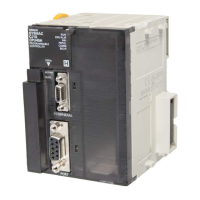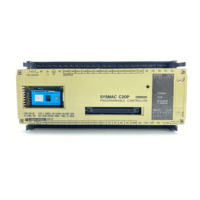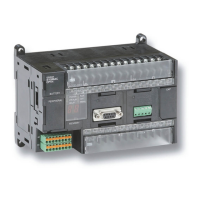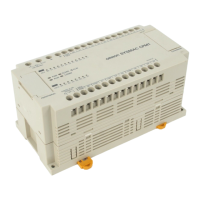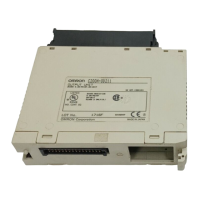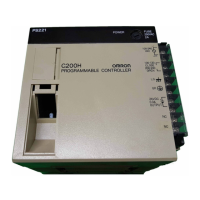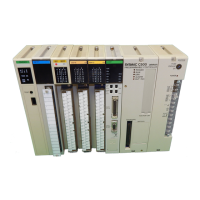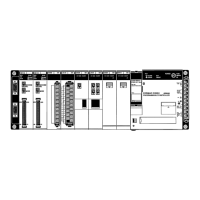299
Diagnostic Functions Section 6-7
Logic Diagnosis Function
FPD(269) determines which input bit is causing the diagnostic output to
remain OFF and outputs that bit’s address. The output can be set to bit
address output (PLC memory address) or message output (ASCII).
• If bit address output is selected, the PLC memory address of the bit can
be transferred to an Index Register and the Index Register can be indi-
rectly addressed in later processing.
• If the message output is selected, the bit address will be registered in an
ASCII message that can be displayed on a Programming Device.
Time Monitoring:
Monitors whether output C goes ON with 10 seconds after input A. If C
doesn’t go ON within 10 seconds, a failure is detected and the Carry Flag
is turned ON. The Carry Flag executes the error-processing block. Also,
an FAL error (non-fatal error) with FAL number 004 is generated.
Logic Diagnosis:
FPD(269) determines which input bit in block B is preventing output C from
going ON. That bit address is output to D01000 and D01001.
Auxiliary Area Flags and Words
Error-processing block
Logic diagnosis
execution condition
B
C (Diagnostic output)
First register word
(Diagnostics output destination)
Monitoring time (0.1-s units):
10 s
Control data
(FAL 004, bit address output)
Carry Flag
FPD(269)
execution
condition
A
Name Address Operation
Error Code A400 When an error occurs, its error code is stored in
A400.
FAL Error Flag A40215 ON when FAL(006) is executed.
FALS Error Flag A40106 ON when FALS(007) is executed.
Executed FAL Num-
ber Flags
A360 to
A391
The corresponding flag is turned ON when an
FAL(006) or FALS(007) error occurs.
Error Log Area A100 to
A199
The Error Log Area contains information on the
most recent 20 errors.
Error Log Pointer A300 When an error occurs, the Error Log Pointer is
incremented by 1 to indicate where the next error
record will be recorded as an offset from the
beginning of the Error Log Area (A100).
Error Log Pointer
Reset Bit
A50014 Turn this bit ON to reset the Error Log Pointer
(A300) to 00.
FPD Teaching Bit A59800 Turn this bit ON when you want the monitoring
time to be set automatically when FPD(269) is
executed.
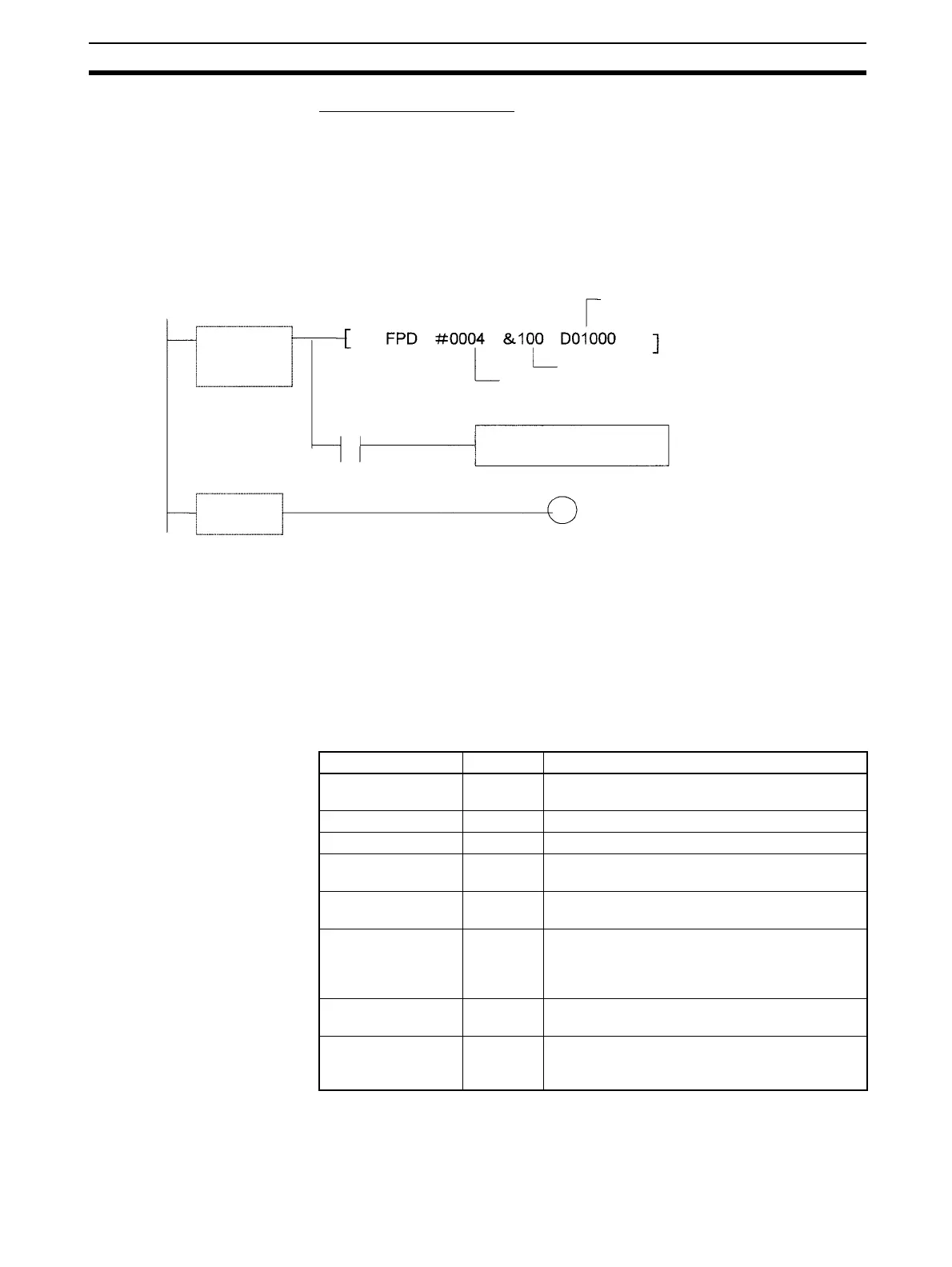